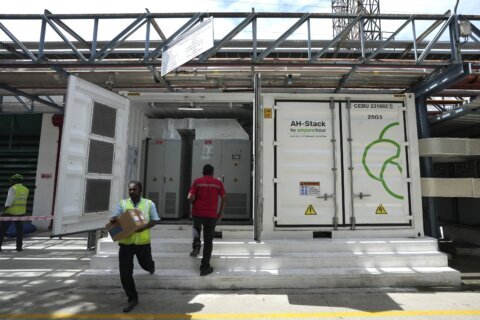Phoenix, otherwise known as the Valley of the Sun, has gradually become one of the fastest-growing job markets and economies in the United States. Besides being the fifth-largest city in the country and the largest in the state, the capital city is also becoming a leader in high technology, manufacturing, bioscience research and advanced business services.
There are some major challenges facing the region, including dwindling supplies of fresh water for the burgeoning population and a serious problem with a rapid rise in the homeless, many of whom test their luck on the streets of downtown Phoenix.
Still, once suffering from a collapsed housing market in the wake of the financial crisis of 2007-08, in more recent years Phoenix’s housing market has not just rebounded — it has become one the country’s economic success stories.
Like many other housing markets in the U.S., home prices in Phoenix jumped along with the rest of the country from mid-2020 to mid-2022 as mortgage rates reached historic lows. Since then, while median home sale prices have fallen as mortgage rates jumped, in more recent months the housing market here has shown signs of leveling out, potentially giving buyers another chance to jump in while they still have the power to ask for price cuts and other sales incentives.
Using information from the U.S. News Housing Market Index, we’ve compiled the data you need for a better understanding of the Phoenix metro real estate market in 2023.
How the Phoenix Housing Market Changed in 2022
The number of single-family detached home building permit applications in Phoenix rose sharply in the first three months of 2022 to reach 3,841, or the highest monthly level since May 2006. However, through the rest of 2022, permit levels mostly declined steadily, falling to just over 1,100 units by January 2023, for a year-over-year decline of over 63%. For the three-month period ending in January 2023 versus the same months of a year earlier, the number of single-family detached permits issued fell by 57.1%.
[IMAGE]
In the multifamily sector, permit issuances didn’t peak until June 2022 at 1,890 units, the highest level since December 2020. Since then — and as vacancy rates rose — developers pulled back on the number of building permits ordered, falling below 1,550 units by January 2023. Although multifamily permits were about the same between January 2023 and a year earlier, during the three-month period ending in January 2023, 12.7% percent fewer multifamily permits were requested versus the same months ending in January 2022.
[IMAGE]
[Read: The Rise of Built-for-Rent]
Phoenix Housing Supply and Demand
The supply of housing in Phoenix, which had dipped as low as 0.99 months in March 2022, continued to rise through the rest of the year as more sellers took advantage of rising home values. After peaking at 4.28 units in November, housing supply fell to 3.56 months in December before rebounding to 4.1 months in January 2023. If a balanced market includes from four to six months of supply depending on demand, Phoenix could be described as a slight seller’s market.
For just the month of January 2023 year-over-year, the supply of homes for sale rose by 2.71 months, or an increase of over 190%. It’s also 28% higher than the months of supply for the overall U.S. in January at 3.21 months, which rose 1.71 months year-over-year, or about 114%. However, there are early signs of Phoenix housing inventory falling back closer to three months in February, which would make it even more of a seller’s market.
[IMAGE]
According to Butch Leiber, president of the Phoenix Board of Realtors and managing broker with Realty Executives International, despite recent increases in the inventory of homes for sale, it’s still below where it needs to be to meet demand. “Even though buyer activity is the lowest it’s been in the last eight years, because demand is still higher than supply, we’re actually in a seller’s market,” he says.
As for water supplies, Leiber suggests “buyers beware,” especially in county islands in between unincorporated areas. Arizona’s groundwater law requires developers to get state certificates of assured water supplies extending out 100 years before they can build, but “wildcat” subdivisions with five or fewer lots do not need to prove long-term water supply.
In addition, since homes planned to be rented don’t have to prove 100-year rights, both traditional flats and “horizontal apartments” — which are really single-family homes for rent — could fill up the water supply queue sooner than later.
In the rental market, the addition of new apartments and single-family homes for rent meant an increase in Phoenix’s vacancy rate of 7.0% as reported by the Census Bureau for December 2022. Rising 1.2% year-over-year and higher than the national average of 5.8%, and because the vacancy rate is 2 full percentage points higher than the 5% level generally considered to represent rental market equilibrium between supply and demand, tenants should be able expect some negotiation room with landlords in the months ahead. The vacancy rate is also up 1.2 points from December 2021 and over 3 points higher than its most recent low of 4.1 months in July 2021.
[IMAGE]
[Is the Rental Market Finally Softening?]
In the months ahead, sales activity may be more impacted by rebounding mortgage rates resulting from inflation, which is trending down but still too high for the Federal Reserve, which hiked its Federal Funds rate another quarter-point in March. According to the seasonally adjusted Purchase Index from the Mortgage Bankers Association for the week ending March 17, although purchase applications did rise for the third consecutive week, they were still down 36% year-on-year as higher mortgage rates continue to keep many buyers on the sidelines.
Consumer sentiment as measured by the University of Michigan’s Survey of Consumers rose to 64.9 on a 100-point scale in January but was still down 2.3 points year-over-year. Notably, while the sub-index measuring Current Economic Conditions for January was higher at 68.4, the Index of Consumer Expectations was lower at 62.7. These differences suggest that while the consumer outlook is improving in the short term, they’re expecting continued inflation and some economic turmoil in the months ahead.
[IMAGE]
[What to Do if Your Home Is Losing Value]
Foreclosure Trends
With low unemployment and most existing homeowners benefiting from low mortgage rates offered in 2021 and part of 2022, both foreclosures and delinquencies tracked by Black Knight remain at very low levels in the state of Arizona. As of October 2022, just 0.10% of homes in Arizona were in foreclosure versus 0.35% for the nation. Statewide delinquencies in December fell 0.1% to 2.7% versus just over 3% for the U.S., although most delinquencies do not make it to the foreclosure process as quickly as they did during the financial crisis.
Median Home Price in Phoenix
For buyers, a growing timeline of homes for sale in the latter half of 2022 helped to lower prices, with the median sales price falling 4.5% year-over-year in January to $425,000. While this median price is still 11% higher than the national median of $383,000 and has fallen 12.6% from its peak of $486,000 in June, if prices continue to moderate and mortgage rates subside, that could boost sales in the upcoming spring and summer selling seasons.
Leiber says it’s become increasingly challenging for entry-level buyers as prices have risen. “Five years ago, in 2018, 84% of all homes sold were under $400,000, whereas today homes priced under $400,000 are just 38% of the market, and those are mostly townhomes and condos.”
Leiber also says that despite low inventory, nearly half of sellers are offering concessions, often in the form of mortgage rate buydowns. “If the seller lowers the price, it saves the buyer more money,” he explains. “Although the 2-1 buydown is often cheaper for the seller, it provides immediate bang for the buck but also assumes the ability to refinance later.”
[IMAGE]
For newly built homes, potential buyers could snag a better deal than they might with existing resale units, especially for standing inventory. Steven Hensley, senior manager with the new home consulting firm Zonda Advisory, says that while larger, public builders were the first to offer price cuts and mortgage financing incentives, smaller and more regional builders are also joining them. “Consumers know that they are out there, that there are a lot more negotiations, and that’s why (new home) sales are steadily increasing.”
In terms of pricing, Hensley says anything under $450,000 is really where the volume is occurring. “Ultimately, given the lack of existing resale homes, builders have an opportunity over the next six months to carve out more market share,” he advises. “New homes with favorable specs and financing are selling at a healthy pace, and builders can pull some levers which don’t exist in the resale market. Consumers don’t want to wait, and certainly want certainty over the next 60 days.”
Although home prices did continue to rise quickly in 2022, they peaked a month earlier in the year than median rental rates did from Zillow’s Observed Rent Index, which continued to rise through July to $1,945 per month. Since then, area rents have continued to slide, falling to $1,858 by January and down 1.2% year-over-year. Notably, with more multifamily supply on the way — including 280,000 units under construction in just the West Census region alone in January — it’s possible that rents will continue to decline, depending on how many of these units are located in the Phoenix area.
[IMAGE]
[READ: What Is a Housing Market Price Correction?]
With the Census Bureau’s American Community Survey reporting 1.86 million households as of December 2021, Arizona’s largest metro area has continued to grow quickly due both to its job market as well as benefiting from households fleeing higher-priced markets in California. In the two years prior to the end of 2021, the region grew by nearly 98,000 new households, or close to 50,000 per year.
Nationally, while costs for new single-family homes as reported by the Census Bureau’s Construction Cost Index for January have retreated from their November peak of 195.5, they’re still up 12% year-over-year to 190.6.
Similarly, while average mortgage rates tracked by FreddieMac’s Primary Mortgage Market Survey did retreat from their peak of 6.90% in October to 6.27% in January, as of March 16, 2023, the rate for a 30-year fixed rate loan rebounded to 6.60%.
Unemployment Trends in Phoenix
It’s hard to understate the strength of the Phoenix economy, with non-farm employment in December 2022 up over 74,000 year-over-year to 2.36 million jobs. Although the local unemployment rate did edge up slightly to 2.7%, this low level of employment is less than the U.S. average of 3.5%.
[IMAGE]
[IMAGE]
Of the 74,300 annual rise in the total number of jobs, 5.4%, or 7,600 positions, were in the construction industry, accounting for a 7.2% share of all jobs in the market area. During this same time period, there were also significant gains in mining and logging (10.3%), manufacturing (7.8%) and leisure and hospitality (6.6%), while there were losses in government jobs (-0.8%).
Builder Confidence in Phoenix Recently Improves
Builder confidence on a scale of 0-100 for the West Census Region from the NAHB/Wells Fargo Housing Market Index fell 54 points year-over-year to 37 in February, but is still up from 39 in January, higher than the national level of 42 and the strongest showing since December.
James Attwood, division president for TriPointe Homes of Arizona, says as interest rates have risen more customers have preferred to purchase homes which offer a quick closing date. For those customers buying a home which may not close for months, Atwood says his company’s ability to lock in borrowing rates well into the future has been a big advantage.
“We’re pretty focused on the southwest valley and south Phoenix, Chandler, Goodyear, Gilbert and desirable infill locations,” says Attwood. As for sourcing fresh water, Attwood does not seem concerned. “In our due diligence, water has become priority No. 1 to make sure the land position already has water rights in place and secured.”
[IMAGE]
For nonresidential construction activity, the Architecture Billings Index provides another economic indicator with a lead time of approximately nine to 12 months, with 50 marking the split between increases or decreases in billings. In January, the index for the West Census region rose 3.7 points year-over-year to 51.3 while the national index fell 1.7 points to 49.3, implying that the health of the commercial real estate construction sector in the West is recovering faster than that of the nation.
[IMAGE]
Phoenix Real Estate Market Predictions
With the spring selling season underway and median prices now holding their own in Phoenix, this could be an opportune time for buyers to take advantage of seller concessions, especially mortgage rate buydowns. Due to the region’s strong population and employment growth and favorable business climate, its housing market could recover faster than other housing markets with weaker economic fundamentals.
However, given the various exceptions for water supply, including apartments and single-family homes for rent, more risk-adverse homebuyers and investors would probably be better served sticking with incorporated cities closer to major employment centers.
The U.S. News Housing Market Index is forecasting over 10,000 single-home permits from February through June in addition to 7,751 permits approved for multifamily homes for the Phoenix MSA. Although single-family units did fall more than predicted in the last half of 2022, that could change if Phoenix population growth remains strong and mortgage rates again retreat well below 7%.
More from U.S. News
Nashville Housing Market Forecast
The Hottest Housing Markets in the U.S.
The Best Places for Singles to Live in 2022-2023
Phoenix Housing Market Forecast originally appeared on usnews.com







